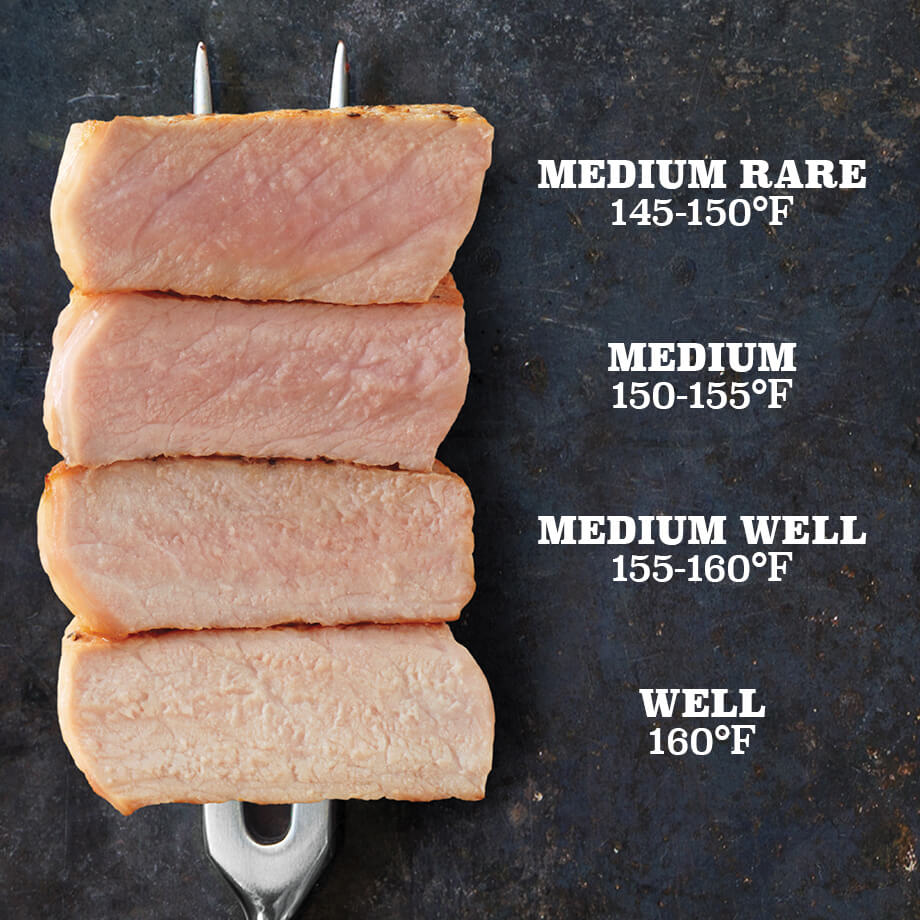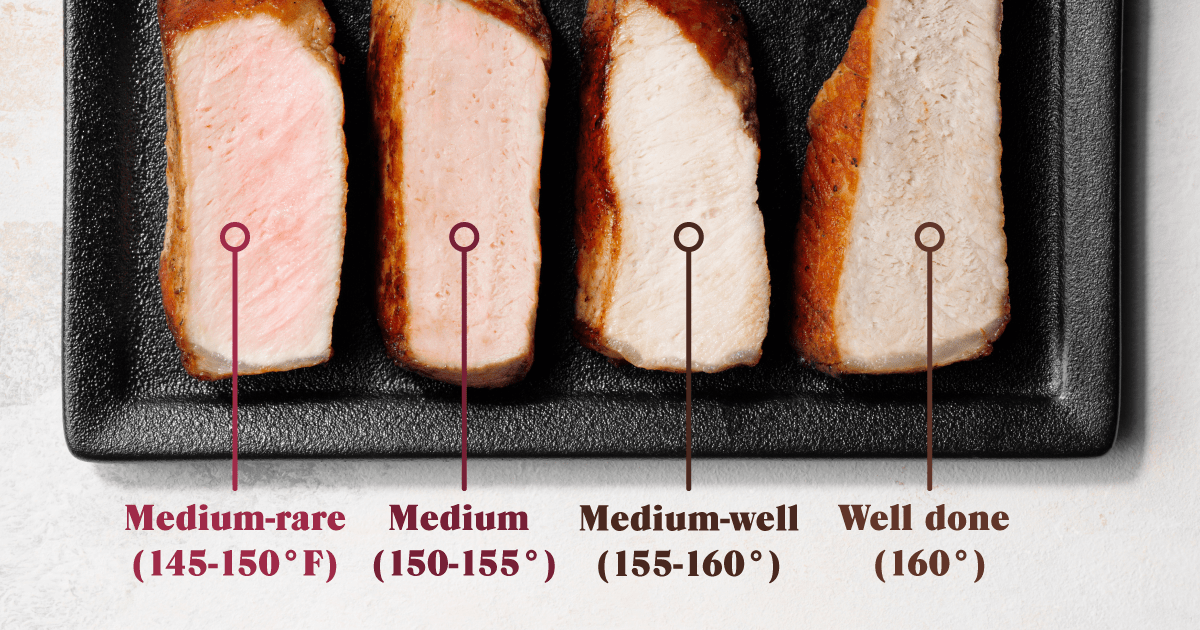Are you tired of dry, tough pork chops that disappoint? The key to achieving perfectly cooked, juicy pork chops lies in mastering the internal temperature.
The quest for culinary excellence often hinges on precision, and nowhere is this more evident than in the realm of cooking meat. Pork chops, in particular, can be a source of both delight and frustration for home cooks. The difference between a succulent, flavorful chop and a dry, unappetizing one often boils down to a few crucial degrees. This article delves into the intricacies of cooking pork chops to perfection, ensuring a tender and juicy result every time.
| Aspect | Details |
| Recommended Cooking Temperature for Boneless Pork Chops | 145F (63C) |
| Safe Internal Temperature (USDA Guidelines) | 145F (62.8C) |
| Temperature Range for Medium Rare to Medium | 145F - 160F |
| Importance of Resting | Allows the meat to redistribute juices, resulting in a more tender and flavorful chop. Resting time: at least 3 minutes |
| Best Method to Check Doneness | Using a digital meat thermometer. |
| Ideal Baking Temperature | 400F (200C) |
| Impact of High Temperatures | Proteins in the pork contract and lose moisture, leading to a dry texture. |
The ideal cooking temperature for pork chops is not a matter of subjective preference; it's a science-backed principle. The recommended cooking temperature for boneless pork chops is 145F (63C). This temperature, according to the USDA guidelines, is the safe minimum internal cooking temperature for pork, ensuring that any harmful bacteria are eliminated while still allowing the chops to remain tender and moist.
Before 2010, USDA guidelines urged home cooks to cook all pork products all the way through, which left the resulting pork free from any potentially harmful bacteria but also pretty dry and tough. Today's guidelines reflect a better understanding of food safety and allow for a more enjoyable eating experience. Fresh cut muscle meats such as pork chops, pork roasts, pork loin, and tenderloin should measure 145 f, ensuring the maximum amount of flavor.
Overcooked pork chops are the bane of any cook's existence. They become dry and tough, a far cry from the juicy, tender result we all crave. The secret to avoiding this culinary misstep lies in understanding the relationship between temperature and texture. At temperatures above the recommended 145F, the proteins in the pork begin to contract and lose moisture. This process leads to a tougher, less palatable chop. To avoid this, use a meat thermometer to check for an internal temperature of 145f (63c). This is the most reliable method to ensure the pork chops are cooked to the correct internal temperature.
Cooking methods also play a significant role. Whether you're grilling, baking, pan-frying, or using an air fryer, the principles remain the same. Pork doesnt respond well to high temperatures. High heat can quickly dry out the chops before the interior has a chance to cook through. The ideal temperature for baking pork chops is 400F (200C). This temperature allows the pork chops to cook evenly, resulting in a juicy and tender texture.
When using an air fryer, you can expect the process to take roughly 10 minutes. Flip the pork chops to the other side after 5 minutes. For frying, dry the pork chops first before seasoning. It's crucial to reach the proper temperature to guarantee that the pork is cooked thoroughly, yet remains tender and juicy.
The cooking time for pork chops is mostly dependent on the thickness. A thicker chop will, of course, require more time to cook. However, it's the internal temperature that truly dictates when the chops are done. Cooking pork to this temperature will help eliminate any harmful bacteria while still allowing the chops to remain tender and moist.
When grilling, the temperature of the grill, which is the most important part. It's important to understand how long to cook pork chops on the grill and what's the best temperature to cook pork chops on the grill. The national pork board recommends cooking pork chops, roasts, and tenderloin to an internal temperature between 145 f. (medium rare) and 160 f. (medium), followed by a 3 minute rest.
Always cook pork chops to 145f. The first step to getting properly cooked and delicious pork chops is to learn what the ideal cooking temperature of the meat is. It is essential to ensure the internal temperature of the pork reaches 145f (63c) for safe consumption. This is the temperature at which pork is safe to eat, provided that it rests for at least three minutes after being removed from the heat source.
Once cooked, add butter and fresh herbs to the skillet. Baste the chops with the melted butter, then transfer to a plate and let them rest for 3 minutes before serving. Cooking pork chops to the perfect internal temperature is crucial for food safety and optimal flavor. Use a digital meat thermometer to check doneness and enjoy a juicy, tender meal. By understanding the importance of internal temperature, cooking methods, and tips for achieving a juicy, tender result, you can transform this simple cut of meat into a culinary masterpiece.
This article provided you with some additional tips for cooking boneless pork chops and to provide a detailed information about the process. Here are the internal temps to go by when making any pork dish (except ground). The recommendations are the same whether youre making chops or a roast. Please note these temps are in fahrenheit. Remove them from the heat once they reach the the recommended temperature for boneless pork chops is 145f (63c). While resting, remove them from the heat at 150
In conclusion, achieving perfectly cooked pork chops is an attainable goal for any home cook. By understanding the science behind the internal temperature and utilizing a few simple techniques, you can consistently produce juicy, tender, and flavorful chops that will delight your taste buds.
For further information, you can refer to the USDA guidelines on safe cooking temperatures and handling of meat products.


